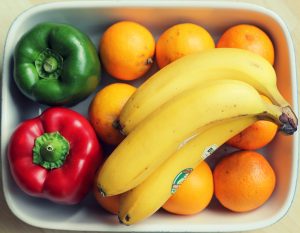Parents imploring their children to eat their fruits and vegetables is a nightly occurrence at many dinner tables. Reluctant youngsters may have a seemingly innate resistance to vegetables, but parents should stay the course, as the importance of making fruit and vegetables a routine part of one’s daily diet is hard to overstate.

Why eat fruit and vegetables?
The U.S. Department of Agriculture notes that fruits do not contain cholesterol and are naturally low in fat, sodium, and calories. Also, fruits contain a host of essential nutrients, including potassium, dietary fiber, vitamin C, and folate, that are historically under-consumed. Similarly, studies have shown that vegetables, which also are great sources of vitamins and minerals, can help people reduce their risk for a variety of conditions, including heart disease, stroke, and certain types of cancer.
How can I include more fruits and vegetables in my diet?
Routine is a big part of many people’s lives, and some may find it hard to change their dietary routines. But people who aren’t eating enough fruits and vegetables likely don’t need to completely overhaul their diets to include more fruits and vegetables. The American Heart Association notes that the following are some easy ways for people to sneak more fruits and vegetables into their diets.
· Breakfast: When sitting down for a bowl of cereal, add some bananas, raisins, or berries to your bowl. When making eggs or breakfast potatoes, add chopped up onions, celery, green or red bell peppers, or spinach.
· Lunch: Forgo sandwiches in favor of fruit or vegetable salads at lunchtime. If you must have a sandwich, top it off with vegetables like cucumbers, sprouts, tomatoes, lettuce, and/or avocado.
 · Dinner: Replace less healthy side dishes with fruit or vegetable salads, and don’t forget to include steamed vegetables, even frozen ones, on your dinner plate every night. Add chopped vegetables, such as onions, garlic, and celery, when creating soups, stews, or sauces.
· Dinner: Replace less healthy side dishes with fruit or vegetable salads, and don’t forget to include steamed vegetables, even frozen ones, on your dinner plate every night. Add chopped vegetables, such as onions, garlic, and celery, when creating soups, stews, or sauces.
A few simple strategies can help people eat more fruits and vegetables and reap the many rewards that such foods provide.



